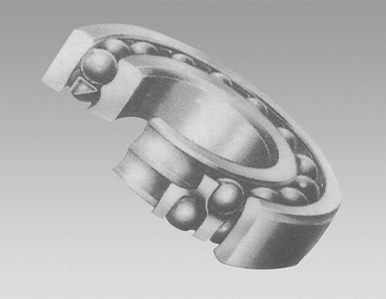
Nov . 04, 2024 21:34 Back to list
what are deep groove ball bearings used for
What Are Deep Groove Ball Bearings Used For?
Deep groove ball bearings are one of the most common types of rolling bearings employed in machinery and equipment across a wide range of industries. Their design and functionality make them integral components that ensure smooth operations and longevity of various mechanical systems. In this article, we will explore the characteristics, applications, and advantages of deep groove ball bearings, highlighting their importance in modern engineering.
Characteristics of Deep Groove Ball Bearings
Deep groove ball bearings are characterized by their deep raceway grooves that enable them to accommodate both radial and axial loads in both directions. This makes them versatile components suitable for many applications. They are typically composed of an inner ring, an outer ring, balls as rolling elements, and a cage that holds the balls in place.
The design of these bearings allows for a low coefficient of friction, which significantly aids in reducing wear and tear during operation. Additionally, deep groove ball bearings can operate at high speeds and are capable of functioning in various environmental conditions, including those with contamination and high temperatures.
Applications of Deep Groove Ball Bearings
1. Electric Motors One of the most prevalent applications of deep groove ball bearings is in electric motors. These motors require components that can handle both radial and axial loads, and deep groove ball bearings fulfill this requirement perfectly. They support the rotor and facilitate efficient rotation, which is crucial for the motor’s performance.
2. Automobiles Deep groove ball bearings are extensively used in automotive applications, such as wheel hubs, transmissions, and engines. They help in reducing friction, optimizing fuel efficiency, and enhancing the overall performance of vehicles.
3. Household Appliances Many household appliances, including refrigerators, washing machines, and vacuum cleaners, utilize deep groove ball bearings. These components are essential for ensuring smooth operation, reducing noise, and increasing the lifespan of appliances.
4. Industrial Machinery In industrial settings, deep groove ball bearings play a critical role in various machines, including conveyors, pumps, and compressors. Their ability to handle heavy loads and maintain performance in demanding environments makes them valuable in manufacturing processes.
what are deep groove ball bearings used for

5. Aerospace Applications In the aerospace industry, where precision and reliability are paramount, deep groove ball bearings are employed in various components, including engines and landing gear. Their ability to operate efficiently under extreme conditions makes them a preferred choice in this sector.
Advantages of Deep Groove Ball Bearings
The advantages of deep groove ball bearings contribute significantly to their widespread use. Some of these benefits include
- Versatility They can support both radial and axial loads, making them suitable for a variety of applications. - High Speed Capability Deep groove ball bearings can operate at high speeds without compromising performance, which is essential in many applications.
- Durability The design and materials used in deep groove ball bearings enhance their durability and resistance to wear, extending the service life of equipment.
- Ease of Maintenance These bearings require minimal maintenance, which reduces downtime and maintenance costs for users.
- Availability Given their common usage, deep groove ball bearings are widely available in various sizes and configurations, allowing for easy replacement and customization for specific applications.
Conclusion
Deep groove ball bearings are a fundamental component in the operation and functionality of countless machines and devices across various sectors. Their unique characteristics, versatility, and several advantages make them indispensable in modern engineering. As industries continue to evolve and advance, the importance of deep groove ball bearings in enhancing performance, efficiency, and reliability will only increase. Understanding their uses and benefits can help businesses make informed choices when selecting rolling bearings for their specific needs, ensuring optimal operation and maintenance of their equipment.
Latest news
-
Premium Deep Groove Ball Bearings | High Speed & Reliability
NewsAug.29,2025
-
Durable Scaffolding Clamps - Secure & Reliable Tube Connectors
NewsAug.28,2025
-
Common Failures in Thrust Ball Bearings and Solutions
NewsAug.22,2025
-
How Tapered Roller Bearings Can Take Shock Loads
NewsAug.22,2025
-
Angular Bearings in High-Precision Spindles
NewsAug.22,2025
-
The Impact of Misalignment on Cylindrical Roller Bearing Performance
NewsAug.22,2025
